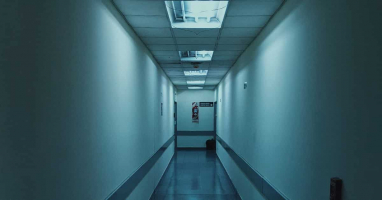I wrote this article in Japanese and translated it into English using ChatGPT. I also used ChatGPT to create the English article title. I did my best to correct any translation mistakes, but please let me know if you find any errors. By the way, I did not use ChatGPT when writing the Japanese article. The entire article was written from scratch by me, Saikawa Goto.
Introduction
Movies and books covered in this article

Three takeaways from this article
- “Fukushima Daiichi Nuclear Accident” and other environmental disasters can happen at any time.
- “Fact” will not become “truth” unless action is taken.
- How did Eugene Smith, who only saw Minamata disease patients as “subjects”, come to take the “masterpiece that remains in the history of photojournalism”?
Self-introduction article


Published Kindle books(Free on Kindle Unlimited)
“The genius Einstein: An easy-to-understand book about interesting science advances that is not too simple based on his life and discoveries: Theory of Relativity, Cosmology and Quantum Theory”
“Why is “lack of imagination” called “communication skills”?: Japanese-specific”negative” communication”
The quotes used in this article are based on notes taken at the movie theater from movies in Japanese and are not direct quotes from the foreign language original movies, even if they exist.
From the Life of Photographer Eugene Smith, Who Conveyed Minamata Disease to the World, Learn the Moment When “Fact” Becomes “Truth”
I was initially surprised to learn of the existence of the American photographer who played a significant role in making Minamata disease known to the world, as I was not aware of it before watching the film. I vaguely remembered seeing one of Eugene Smith’s greatest masterpieces, “Tomoko and Mother in the Bath,” somewhere before. Not only its beauty, but also its power to vividly convey the reality of the tragedy in a single photograph, is what makes this piece truly remarkable.

In this movie, Minamata disease itself is not depicted in detail. Basically, it’s a story about Eugene Smith. However, Chisso Corporation, which caused Minamata disease, is fairly depicted. Apparently, it was already a problem in Japan when Eugene Smith arrived. There were trials and citizens’ protests against it. However, Chisso Corporation continued to operate with an attitude of “just pay compensation”. Shockingly, for 15 years after the first confirmation of Minamata disease, there was no improvement.


It’s hard to imagine in today’s world. One reason why it was possible back then was that “Minamata disease didn’t attract global attention”. It was a known issue in Japan, but information hadn’t reached other countries, so they were able to do as they pleased.
In that sense, it can be said that Eugene Smith’s involvement was very important.
In modern times, due to calls such as “SDGs” and “ESG investment”, it has become very difficult to ignore environmental issues and social problems in management. It’s much better than during the time of Minamata disease. However, even so, “zero pollution” is not achievable. The Fukushima Daiichi Nuclear Accident can be called a “man-made pollution”, and this movie’s end credits show examples of pollution that have occurred around the world with photos.

Public pollution like Minamata disease could happen again in the future. Therefore, we should keep a watchful eye on society and businesses.
How did Eugene Smith Turn “Facts” into “Truth”?
In this film, the interesting point is how Eugene Smith’s change in stance as a “photojournalist” is linked to the trajectory of how “Minamata disease” became known throughout the world.
Although things have changed considerably now, journalism in the past used to be the kind of thing that would harm victims without question. I think that the contradiction that “reporting, which should convey damage,” has become the “perpetrator of damage” to the point where words such as “damage from media” have been born.

I felt Eugene Smith’s initial stance on the “press” seemed to be similar to that. He touches on his philosophy of taking photographs in few concrete scenes, but says the following:
Native Americans believed that cameras take away the soul of the subject.
Butin fact, that’s not all. Cameras also take away a part of the soul of the one who takes the photo.
Even the one who takes the photo can’t remain unscathed.


Don’t let your emotions control you. If you do, you lose. It can even cost you your life. Focus on what you’re photographing and what you’re trying to convey.
These words can be summarized as follows:
The act of taking a photo also hurts oneself. Nevertheless, take pictures of what you should take.
In other words, it means to chase the subject by becoming insensitive to the ‘pain.

In fact, for a while at the beginning, Eugene Smith aimed his camera with such a stance. Aileen, who served as Eugene Smith’s interpreter, noticed this and even warned him to “show empathy.” In other words, Eugene Smith saw the people suffering from “Minamata disease” only as “subjects.”
However, in the film, his stance dramatically changes at a certain moment. He steered towards “taking a picture while sympathizing with the pain.” This led to the creation of photos later acclaimed as “masterpieces in the history of photojournalism.”

Compared to Eugene Smith’s time, it has become much easier in modern times for anyone to turn the people and reality in front of them into a “subject” by pointing a camera at them. Everyone has a smartphone and records various things by pointing their cameras at them.
However, not everything recorded by pressing the shutter becomes “truth”. Basically, what is recorded by a camera is just a “fact”.
The difference between what I think of as “fact” and “truth” is that “fact” is something you acknowledge and “truth” is something you believe. For example, if you take a picture of an apple, “there is an apple there” is a “fact” and “this apple has been carefully grown by a farmer” is the “truth”. Therefore, while there is basically only one fact, I believe that there are as many truths as there are people.

In just taking a photo, it’s no more than a mere “fact.” To make it the “truth,” you need to have the feeling of “wanting to believe,” and for that, the person taking the photo must have a strong feeling of “wanting to convey this.”


In the flood of vast amounts of photos, it has become even more challenging to encounter the “truth” than before. Certainly, photos are not merely tools for “conveying the ‘truth’.” They can also be used for casual communication, convenient notes, and sharing visual information. However, it can be said that the role of photography in “conveying the ‘truth'” is very powerful.
We live in an era where anyone can become the next Eugene Smith. Therefore, I think it’s essential to have the realization that “it can become the ‘truth’ only when it is conveyed with the feeling of ‘wanting to convey.'”

Content Introduction
Eugene Smith, who is called “Gene” by those around him, worked as a staff photographer for LIFE magazine for a long time. He even visited Japan to cover the Battle of Okinawa. However, now he is withering away in a corner of New York. He is unable to move his body as he wishes due to his heavy drinking, and he continues to be behind on rent. Apparently, he has also lost touch with his children. He thought that he could at least leave some money for his children by selling all the remaining equipment since he felt that there was nothing else he could do.
At that timing, a FUJIFILM commercial shooting crew comes to Gene. He had completely forgotten about the appointment. Aileen, who came as an interpreter for the crew, talks to Gene after the shooting is over. She had something else she wanted to ask him for. It was a report on “Minamata disease”.

Aileen pleaded, “There are people suffering from mercury poisoning in Kumamoto, Japan.” She wanted to attract the world’s attention, so she asked Gene to come to Japan and capture the reality on film. However, Gene refused, having sold his equipment and having gone through a difficult experience during the Battle of Okinawa. Aileen left a newspaper article about Minamata disease with him and asked him to contact her.
After reading the article, Gene stormed into the office of LIFE magazine’s top editor, Bob, who had been instrumental in making LIFE magazine a top-class magazine. Gene passionately told Bob, “If I shoot Minamata disease, I’m sure to win the Pulitzer Prize.” However, LIFE magazine is in financial difficulties and has been cornered as much as forced to use 67% of its pages for advertising. So Bob had no time to deal with Gene. Nonetheless, with the support of a young editor at LIFE magazine, Gene was able to obtain the GO sign for shooting Minamata disease.

Gene arrived in Kumamoto and decided to live in the area with Aileen while conducting photo shoots of the residents. However, the people living around them looked at Gene suspiciously. Despite having conducted numerous protests they had no results, furthermore were exhausted from various interviews. So they still hid their faces when Gene pointed the camera at them.

Nevertheless, Gene gradually began to understand the situation faced by the people living in Kumamoto and the current state of Minamata disease, and he started to approach the residents little by little…

Impression
The only information I knew about the film was that “There was a photographer who introduced the Minamata disease to the world”, and I was only thinking that “There is a wonderful person. However, after watching the movie, I found it very interesting that Eugene Smith was actually a much more flawed person than I had thought.

I wouldn’t mind being an alcoholic or whatever, as long as it was before I took on the Minamata disease shoot, but even after accepting the project, he continued to be a pretty bad person. He probably had strong ambitions and a strong passion for photography, but overall he would likely be judged as “disqualified as a member of society.” Despite witnessing the reality of Minamata disease, which is visually and clearly terrible, he seemed somewhat detached and couldn’t empathize with it, and I was surprised by his presence, which was far from the image of the person who “spread awareness of Minamata disease to the world.”

The movie explores how a person like Eugene Smith, who is so flawed, was able to create a work like “Tomoko and Mother in the Bath”. This adds another dimension to the film, separate from the reality of “Minamata disease”. While the story could have stood on its own with just the portrayal of the disease, the inclusion of Eugene Smith’s flaws adds depth to the narrative.
Additionally, I was impressed by the Japanese actors’ English pronunciation. While I am not someone who can perfectly understand English, especially when spoken with a Japanese accent, I can usually catch the gist of what is being said. However, the Japanese actors in this film spoke with a native-like pronunciation, in other words, “a fluent pronunciation that I can’t hear.” The actress who plays Aileen seems to be originally fluent in English, but both Kase Ryo and Kunimura Jun were very good at it. Kase Ryo’s English was so good that he didn’t even realize it was Kase Ryo. I thought he was just an extra who only appeared in that scene.

What surprised me even more than the English pronunciation was Aoki Yuzu.
In the movie, there is a Minamata disease patient who borrows a camera from Eugene Smith to take pictures, and that actor turned out to be Aoki Yuzu. I have watched movies with Aoki Yuzu before and knew of his existence. However, while watching the movie, I didn’t realize that the Minamata disease patient was Aoki Yuzu.

I didn’t realize it because “the boy who borrowed the camera from Eugene Smith thought that a real Minamata disease patient was playing the role.” I never imagined that “an actor was performing the movements of a Minamata disease patient.” I don’t really know much about Minamata disease patients, but the atmosphere that I had imagined was conveyed so realistically that I believed without a doubt that it was a real Minamata disease patient.
It was also a movie that made me realize again the greatness of the actor Aoki Yuzu.

Conclusion
As mentioned earlier, the movie “MINAMATA” does not provide a detailed description of Minamata disease. Therefore, it would not be correct to judge anything about Minamata disease just by watching this movie. You need to obtain knowledge through some other means.
However, I think that this movie will convey how many people struggled to “spread Minamata disease to the world.” I hope you will learn about the achievements of Eugene Smith, who changed the “fact” that everyone knew into the “truth” that everyone knows.

Published Kindle books(Free on Kindle Unlimited)
“The genius Einstein: An easy-to-understand book about interesting science advances that is not too simple based on his life and discoveries: Theory of Relativity, Cosmology and Quantum Theory”
“Why is “lack of imagination” called “communication skills”?: Japanese-specific”negative” communication”







コメント